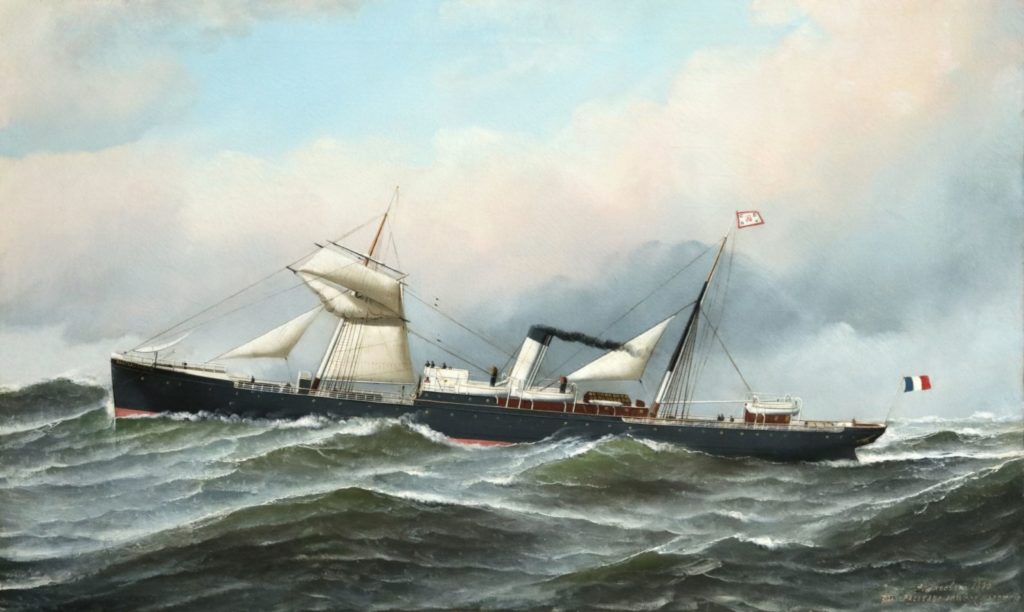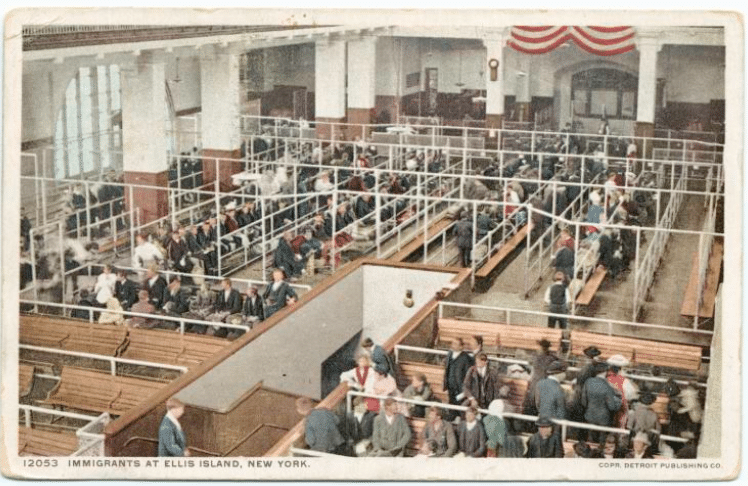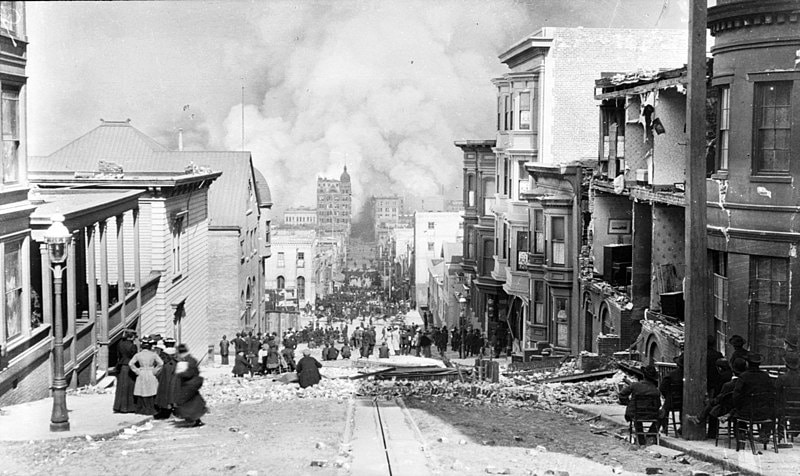
Like many people from southwestern France, my great-great-grand-uncle, Pierre Ducasse, emigrated to the United States at the end of the 19th century. Despite a life filled with tragedies, he managed to adapt to American life and contributed to the development of San Francisco. My research in both French and American archives has allowed me to trace his life path.
Pierre’s childhood
Pierre was born on December 21st, 1869 in Lacadée1, a small village in the department of Pyrénées-Atlantiques in south western France. He was the youngest of four children. His family, the Ducasses, were mostly craftsmen and land owners. His father, Jean, was a tailor and owned some land and three houses in the village. Pierre, for his part, trained as a carpenter, following in the footsteps of his godfather.
Like many Pyreneans, his older brother Jean emigrated to America in 1888. At the time, Pierre was 19 and he was about to fulfill his military obligations.
The Military Service
Pierre joined the 6th Hussar Regiment in November 1890 but was discharged after a few months due to the aftereffects of tuberculosis2. Freed from his military obligations, he could join his brother in San Francisco.
Departure for America
Pierre turned to an emigration agency for his journey to America, which cost 335.40 francs, covering the boat trip and train tickets3. For reference, the salary of a carpenter in the Pyrénées area in 1890 was about 3 to 4 francs per day4, making this trip a considerable expense.
Pierre travelled with Jean Dubourdieu, another young man from the village. On May 15, 1892, they boarded the Château-Laffitte in Bordeaux, enduring challenging conditions in third-class steerage for fifteen days before reaching New York5.

Arrival in New York
On May 30, 1892, Pierre and Jean arrived in New York, Ellis Island.
The federal government bought the island to build a center entirely dedicated to welcoming immigrants. This center, inaugurated in January 1892, was designed to support the increasing number of newcomers arriving from Europe.
Pierre and Jean went through the immigration process: a health check and medical inspection, those who passed were allowed to see the immigration officer, while others might be quarantined or sent back. Pierre and Jean passed the inspection and went through an interview with an officer and a translator who questioned them about their plans in America and their contacts there.
After passing the immigration process, they could board the ferry to Manhattan.

The Train Journey
The young travelers now had to cross the vast continent. Fortunately, the railroad had connected New York to San Francisco since the 1860s, and the journey took between seven and twelve days. At that time, food was not served on board the trains, the travelers had to stop regularly to have their meals. After a long and uncomfortable ride through landscapes they had never seen before, Pierre and Jean finally arrived at their destination.
Beginnings in San Francisco
San Francisco already had a well-established French community since the 1850s on which the two young men could count for support and integration. Over time, Pierre learned the English language, although he maintained his French heritage by speaking his native tongue with his children6. In 1898, he married Jeanne Victoire Lauray, a French woman who had come to San Francisco with her parents7. They were married at the Notre-Dame des Victoires church, built for and by the French community. In 1900 the couple was living at 911 Sacramento Street8. Their family expanded in 1902 with the birth of their first child, Arthur. Pierre initially worked as a cellarman before returning to his carpentry profession in 19049. His carpenter skills would prove invaluable during the aftermath of San Francisco’s 1906 earthquake.
The 1906 earthquake
On April 18, 1906, at 5 a.m., a 7.9 magnitude earthquake struck San Francisco, causing panic, destruction, and fires that lasted for three days. Many residents fled to higher ground or tried to cross the bay to seek refuge in nearby towns. Pierre and his family may have been among those who sought shelter in makeshift camps, sleeping in tents and waiting in line for a serving of soup. Sacramento Street, where they lived, was heavily affected by the earthquake, and Pierre would no longer reside there. By 1907, the family moved to 77 Pixley Street. While this tragedy likely caused him to lose his home, it also presented an opportunity. During the city’s reconstruction, the municipal government sought skilled workers and offered attractive wages. Pierre contributed to rebuilding the city while benefiting financially. San Francisco was almost entirely rebuilt by 1908.

GENTHE, Arnold, San Francisco earthquake and fire of 1906 [photograph], Library of Congress Prints and Photographs Division Washington, D.C. 20540 USA: https://www.loc.gov/pictures/item/2018704113/
A Return to His Roots
In 1907, Pierre briefly returned to France with his five year old son, Arthur, to visit his family10. Shortly after their return to the United States, Pierre’s sister, Marie passed away11. She left behind three daughters: Marthe, the eldest, already married and mother of two, the only one to remain in France; Suzanne, aged 21, who had been residing in San Francisco for four years and was married to Michel Lacau, a French laundry owner on Union Street; and Maria, the youngest, who was still living in France with her father, Jean Villemur, the village miller. Maria subsequently immigrated to San Francisco the following year.
Tragedy struck again in 1909 when Pierre lost his second son, René, born in 1906. The family welcomed new joy on June 24, 1910, with the birth of their daughter, Irène Suzanne.
Naturalization
Pierre applied for naturalization on April 15, 191412. He was 44 years old and he was living at 1515 Pacific Avenue. His application was accepted on July 25, 1917. In the meantime, several events disrupted his life: France’s entry into World War 1, the death of his brother Jean, who had returned to France ten years earlier, and the birth of his fourth child, Roger Victor, on December 21, 1914. While his wife and the three children stayed in San Francisco, Pierre bought a ranch in Lassen County and became a farmer.
Life on the Ranch
Pierre’s ranch was located in Ravendale, near Susanville, California, in a remote area where the Nevada desert begins. He devoted himself to sheep farming and commissioned the construction of a reservoir, which continues to bear the name Ducasse Reservoir. His family maintained their San Francisco residence until his wife’s death, in 1921, after which the children relocated to join their father at the ranch.
The Great Depression and the End of his Life
In 1929, the global financial crisis struck Pierre hard. After rebuilding his life following the 1906 earthquake, he lost everything and was left ruined. He had to live with his children. Diagnosed with cancer, he died on October 23, 1937, at the Susanville hospital13.
A Life of Courage and Resilience
Pierre’s life exemplified determination. He embarked on a bold adventure, crossing the ocean without knowing English. He successfully assimilated into America’s diverse society, eventually becoming a citizen. His legacy endures through his contributions as a San Francisco builder, a Ravendale farmer, and as a father to American children.
You have a French ancestor and want to know about his origins ?
- Archives départementales des Pyrénées-Atlantiques, Etat civil, Lacadée 1746-1889, p.276, https://earchives.le64.fr/archives-en-ligne/ark:/81221/r22851zwqknxbk/f276 ↩︎
- Archives départementales des Pyrénées-Atlantique, Matricules militaires, classe 1889, n°203, https://earchives.le64.fr/archives-en-ligne/ark:/81221/r155031zf6hhvk/f1 ↩︎
- Association Mémoire Emigration, archives de Jean Laplace ↩︎
- Escola Gaston Febus, Les salaires en 1890 dans la vallées d’Ossau, available on line: https://escolagastonfebus.com/societe/les-salaires-en-1890-dans-la-vallee-dossau/?print=print ↩︎
- Ellis Island Passenger Search Database, records of passengers arriving to the port of New-York from 1820 to 1957, Pierre Ducasse, passenger ID: 103545010020, available online: https://www.statueofliberty.org/statue-of-liberty/ ↩︎
- Pierre’s great-granddaughter gave me this information. ↩︎
- The San Francisco Call and Post, Thu. June 16, 1898, p.13, available on newspapers.com ↩︎
- National Archives and Records Administration, 1900 United States Federal Census, California, San Francisco, District 0263. Available on Ancestry.com ↩︎
- San Francisco, California, City Directory, 1904, available on Ancestry.com ↩︎
- Ellis Island Passenger Search Database, records of passengers arriving to the port of New-York from 1820 to 1957, available online: https://www.statueofliberty.org/statue-of-liberty ↩︎
- Archives départementales des Pyrénées-Atlantiques, 4 E 135/8, Bonnut, Etat civil. ↩︎
- The National Archives at San Francisco, San Bruno, California, Petitions for naturalization, 1903-1911, available on Ancestry.com ↩︎
- Reno Evening Gazette, October 21st, 1937, p.9, available on Ancestry.com ↩︎